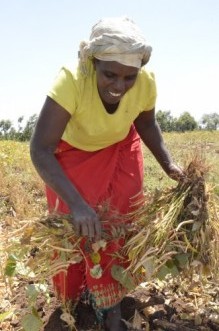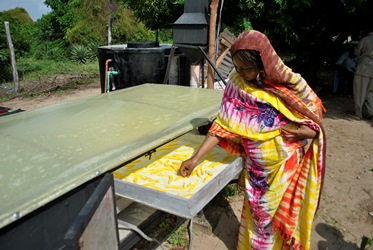
Many smallholder farmers are grappling with post-harvest losses of their beans due to poor storage and attack by pests such as bean bruchids (grain weevils).
The bean bruchid is a major pest of stored beans. The damage caused by the pest has a negative impact on the value and marketability of the crop and can even change some quality characteristics of the crop, including the taste.
The holes made by the larvae often make the crop unmarketable. Losses of up to 40% of the harvested crop have been reported in some places like Machakos County.
Bruchids feed within the bean, leaving beans with many holes and low weight.
According to Kenya Agricultural Research Organization, Bruchids can be controlled by:
- Mixing 2 match boxes full of Actellic Super with a 90 kg bag of bean grain. Actellic super can be obtained at certified Agro-vets in various towns and shopping centers in Kenya at between Ksh. 120 to Ksh. 1,000 depending on quantity.
- Mixing the dry bean grain with wood ash at 5 kg of ash per 90 kg bag of beans.
- Mixing a teaspoon of corn oil like Elianto per 1 kg kimbo tin of grain.
- Sunning and sieving:
READ ALSO: Farmer boosts maize nutrition with soy beans
READ ALSO: KALRO releases drought tolerant beans
READ ALSO: Bidco desperately looking for farmers to grow sunflower and soya beans
If you have 1 or 2 bags of beans and you live in a sunny area, sunning and sieving kills the eggs and larvae and makes the adults fly away.To use this method do the following:
- Spread out the beans on a mat under the sun for about 6 hours.
- After sunning the beans sieve them using an ordinary kitchen wire sieve or use a flat tin sheet with holes punched in it. This cuts down on costs.
- During the first 3 months after harvest, sieve the beans once every 2 weeks. After 3 months, sieve the beans once every 3 weeks.
Farmers in Machakos found sunning and sieving to be the best control method because storage loss is reduced by killing the pests’ eggs. It allows farmers to save money as the method uses natural means. By sunning and sieving, the beans are not harmed or damaged and they will germinate well. The vigor of the small bean plant is also not affected. The beans thus stay clean and taste nice and there is no risk of poisoning from insecticide.
Write comment (0 Comments)
















